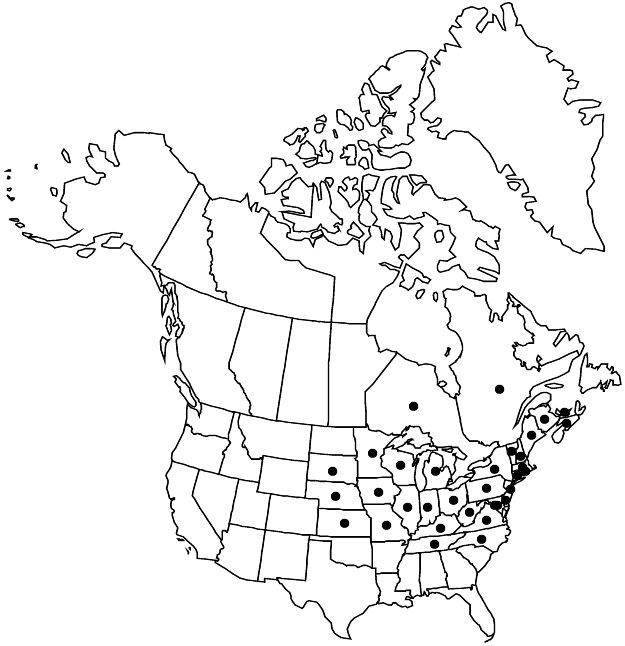Geum laciniatum
Novi Comment. Soc. Regiae Sci. Gott. 5: 30, plate 2. 1775.
Plants leafy-stemmed. Stems 30–100 cm, hirsute, some hairs 2–2.5 mm. Leaves: basal 15–32 cm, blade simple, lyrate-pinnate, or pinnate, major leaflets 1–7, alternating with 0–10 minor leaflets, terminal leaflet slightly to much larger than major laterals; cauline 3.5–18 cm, stipules ± free, 4–14 × 7–17 mm, blade pinnate, 3-foliolate, or simple and unlobed. Inflorescences 2–9-flowered. Pedicels densely puberulent, hirsute, eglandular. Flowers erect; epicalyx bractlets 1–2 mm; hypanthium green; sepals spreading but soon reflexed, 3–10 mm; petals spreading, white, oblong to elliptic, 2–5 mm, shorter than sepals, apex obtuse to rounded. Fruiting tori sessile, glabrous except for ring of bristles at base and tuft at apex. Fruiting styles geniculate-jointed, proximal segment persistent, 2.5–5 mm, apex hooked, glabrous, sometimes 1–2 eglandular bristles at base, distal segment deciduous, 1–2 mm, short hairs on basal 1/2. 2n = 42.
Phenology: Flowering early summer.
Habitat: Wet woods and thickets, flood plains, wet woods around lakes, stream banks, boggy meadows
Elevation: 0–1000 m
Distribution

N.B., N.S., Ont., P.E.I., Que., Conn., Del., D.C., Ill., Ind., Iowa, Kans., Ky., Maine, Md., Mass., Mich., Minn., Mo., Nebr., N.H., N.J., N.Y., N.C., Ohio, Pa., R.I., S.Dak., Tenn., Vt., Va., W.Va., Wis.
Discussion
B. L. Robinson and M. L. Fernald (1908) and J. K. Small (1933) misapplied the name Geum virginianum to this species. As a consequence, older specimens of G. laciniatum are often labeled (and filed in herbaria) as G. virginianum.
Geum laciniatum is unique among members of the genus in having some of the heads of achenes pop off the stem and disperse as a unit. The heads disarticulate where the torus joins the hypanthium, leaving the hypanthium inverted at the tip of the stem.
Fernald described var. trichocarpum based on the presence of bristles on the summits of the achenes. Although this morphology occurs to the near exclusion of the glabrous one in the western part of the species range, it also occurs as far east as the Carolinas, Maine, New Jersey, and Virginia. The glabrous condition has a smaller range, and it is the prominent one in Nova Scotia, Kentucky, Maine, and Ohio. The two are well mixed in Quebec, New York, and Pennsylvania. Although they are easily distinguished (hairs absent versus present), they seem to have little phytogeographic significance, and presence of achene hairs is not correlated with any other characteristics. It appears to be a trivial variation.
Geum laciniatum hybridizes with G. urbanum (= G. ×macneillii J.-P. Bernard & R. Gauthier); see discussion under 15. G. urbanum.
Selected References
None.